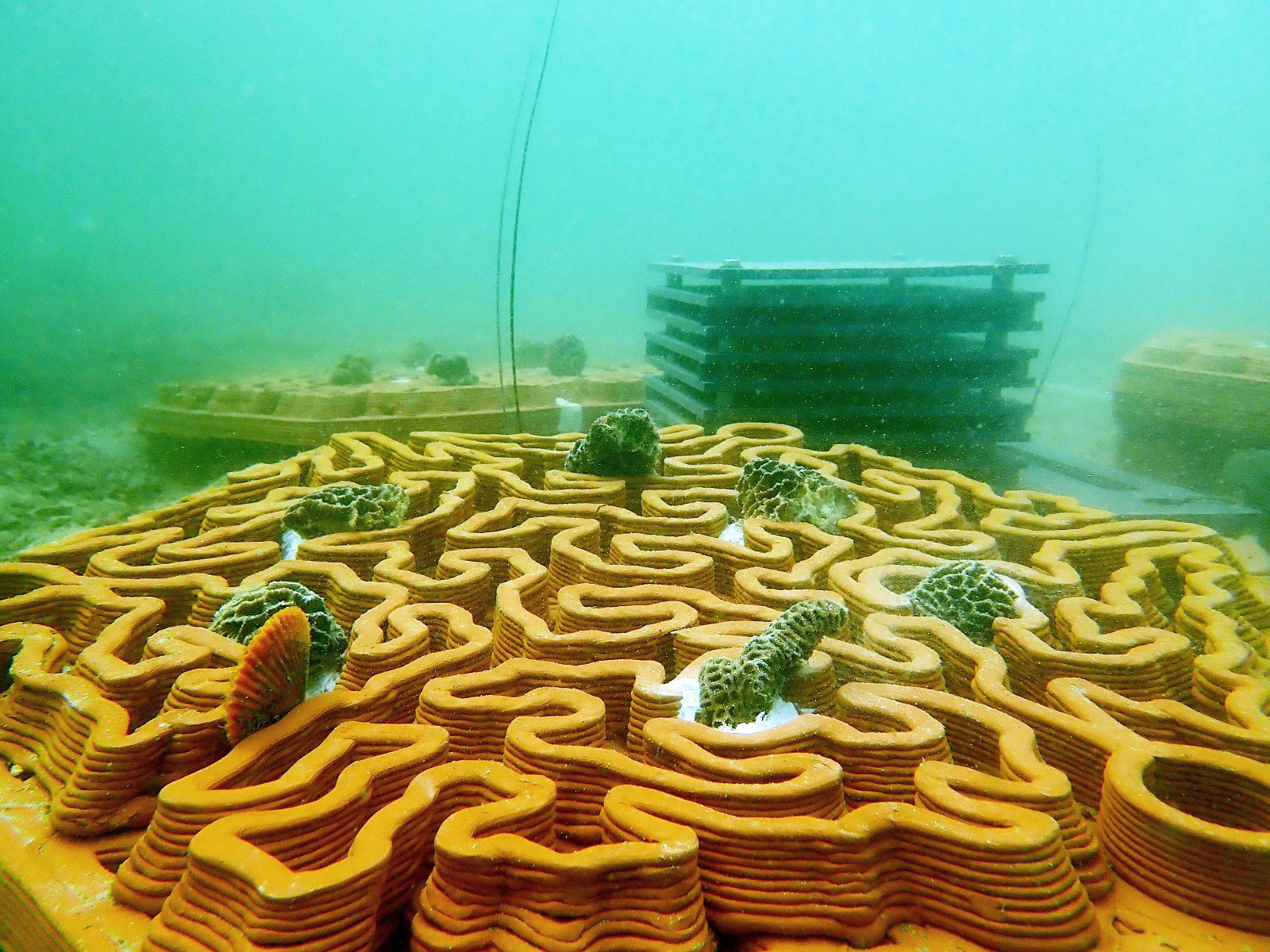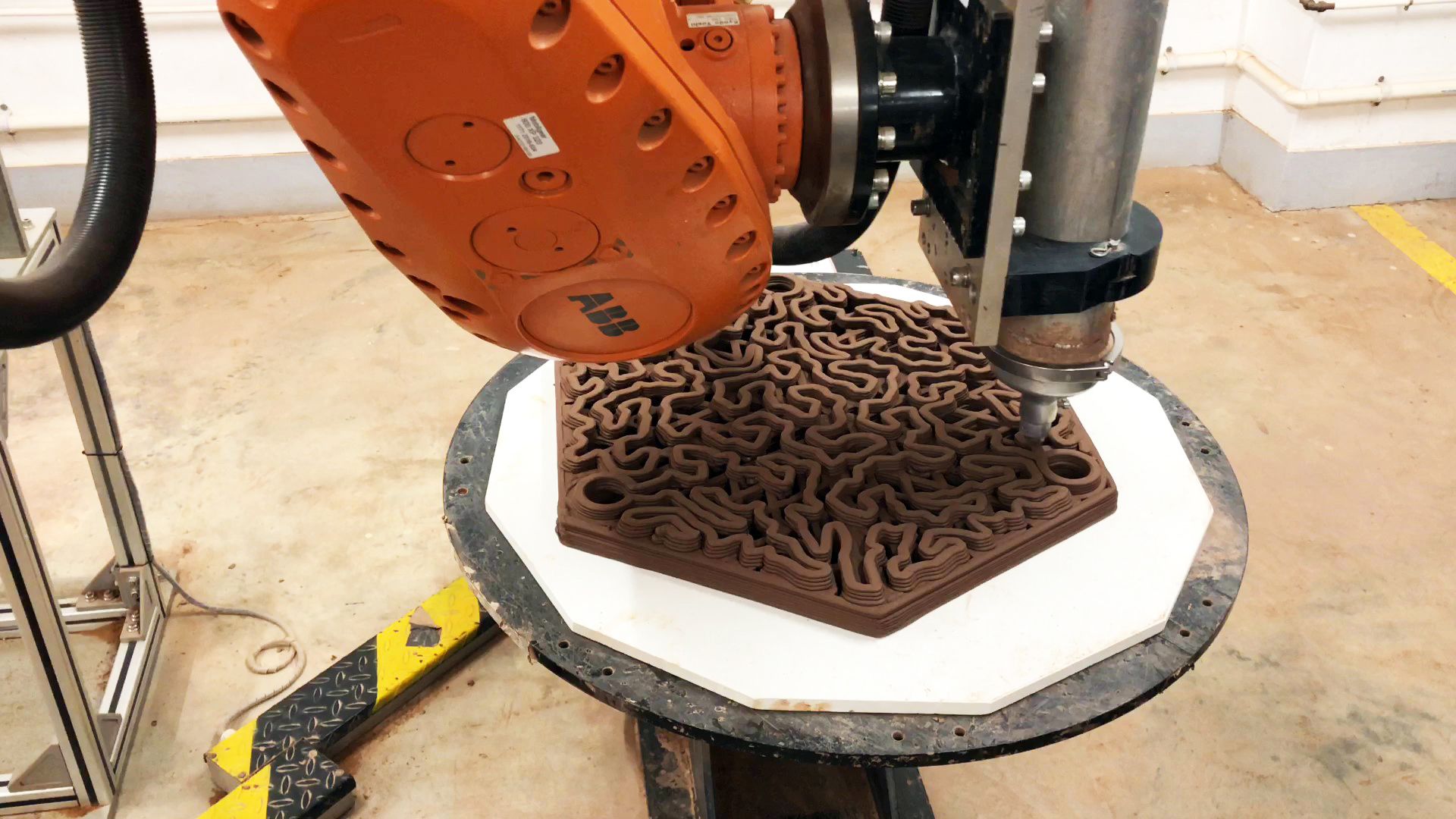Hong Kong architects 3D print the world’s first clay structures to rescue corals destroyed by Typhoon Mangkhut
As the marine vessel of the Swire Institute of Marine Science (SWIMS) of the University of Hong Kong edges closer to Moon Island in Sai Kung’s Hoi Ha Wan, a cluster of reddish hexagons looms under the sea. But these aren’t corals. Neither colourful nor teeming with much life, these “beehives” appear to be a jarring sight. Two years ago, Typhoon Mangkhut swept away 80% of the local corals, leaving behind debris, broken coral skeletons and some surviving species in some of the Hong Kong waters. It may take up to decades for corals to regrow to its former state naturally. Yet a team of SWIMS researchers (Vriko Yu, David Baker and Phil Thompson) as well as architects (Christian J Lange, Lidia Ratoi, Dominic Co Lim, and Jason Hu) at HKU are on an ambitious rescue mission.
The Reformative Coral Habitats project, conducted by Hong Kong’s first robotic fabrication laboratory at HKU’s Faculty of Architecture, has been printing out the world’s first terracotta tiles. The peculiar-looking structures, flatter than most coral species, sit steadily on the seafloors of Moon Island, Point One (near Jockey Club HSBC WWF Hong Kong Hoi Ha Marine Life Centre’s platform) and Coral Beach (in Cheung Chau), where most of the local corals grow. Weighing around 20kg and 65cm-long in diameters, each tile is composed of 3 parts: the legs, nine-grid layers and six coral-like layers. Together, the tile units act as an anchoring bed for corals to attach and grow. Assistant Lecturer, Lidia Ratoi explains, “The tiles aren’t conventional tiles. Hong Kong’s subtropical climate entails much underwater sedimentation. That’s why our tiles have a lot of perforations so that sediment doesn’t deposit on the surface and suffocate the corals.”

The coral-biomimicry layers are designed according to the geometry of a brain coral, so that it does not interfere with actual corals’ growth patterns. There are eight pockets on each tile to host corals. “The pockets are big enough to allow the corals to grow both horizontally, to become sturdy, and vertically, so that they can compete with other underwater species such as algae which may suffocate them,” Ratoi explains. “Corals grow only during the warm season. It’s vital that they are forced to grow in a vertical direction.”
These coral bits planted in the pockets are parts broken off from the original corals before the typhoon. “So they’re genetically the same [as the corals before],” says Lange, who hopes that their project can speed up the restoration of the local coral population. Clay, similar to the calcium found in corals, may not be the strongest material when it comes to engineering a “city” that can withstand the strong ocean currents. Christian Lange, Associate Professor (Teaching) and Director, Fabrication and Material Technologies Lab & Robotic Fabrication Lab, admits that one of the greatest difficulties the team faces is the breaking of the clay units from time to time.
Yet they decide to settle on clay instead of plastic or concrete. The architects observe that there are similar marine projects such as those in France which also print 3D coral structures, though with a different material. “But there are a lot of conditions like water temperate or salinity to consider in the subtropical waters of Hong Kong,” Ratoi explains. “Some other marine species aside corals may not be able to survive the changes in water, but clay doesn’t damage the underwater conditions.”
Surprisingly, the material they’re using doesn’t contain any special ingredients at all. “It’s just clay you can find on any shelf from the UK,” Lange says, pulling out a blob of soft, dark brown clay from the printing machine. “Hong Kong doesn’t have its own clay, but I would like to try working with local materials in the future,” he says.


